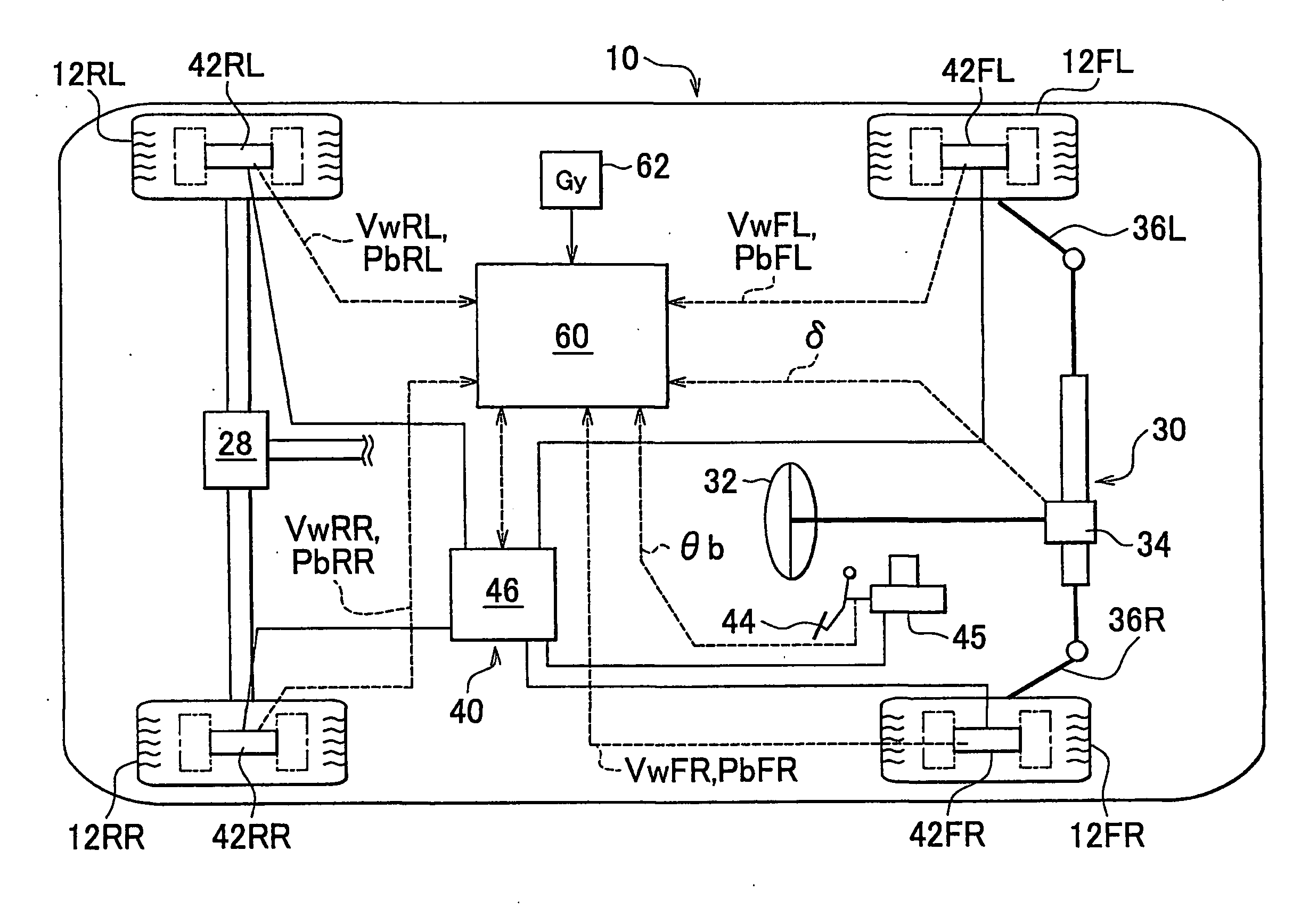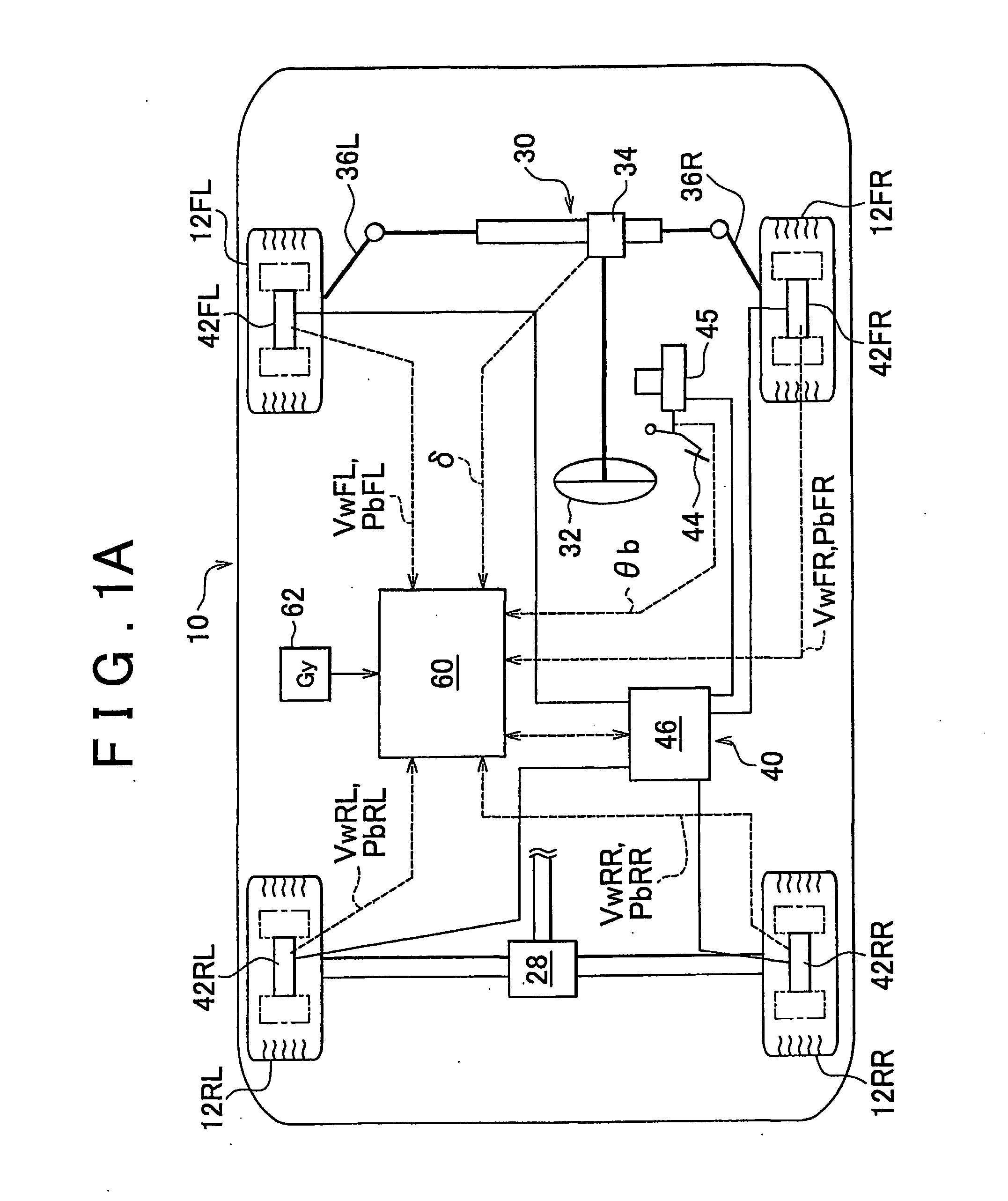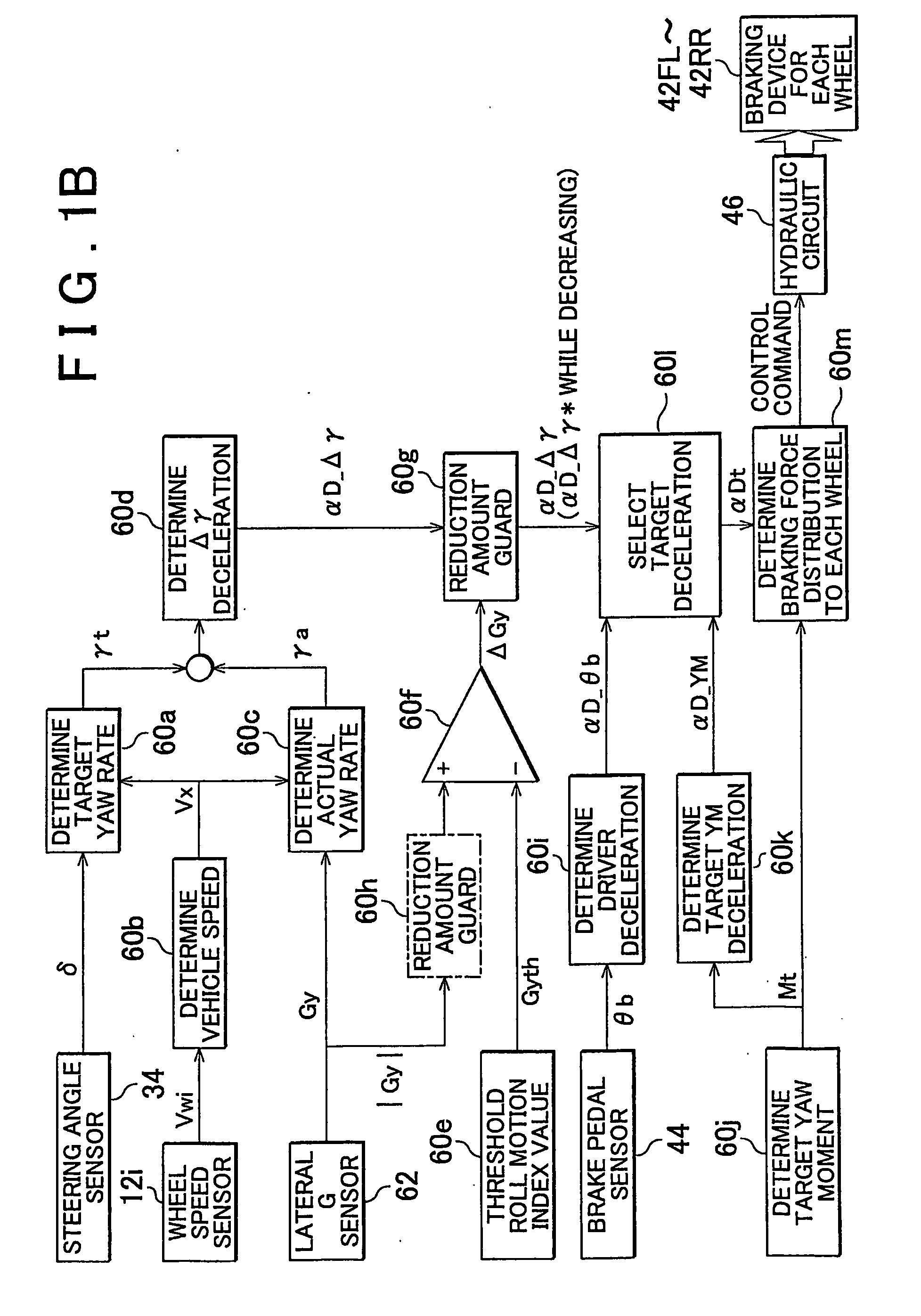Vehicle behavior control apparatus
a technology of vehicle behavior and control apparatus, which is applied in the direction of vessel construction, steering initiation, instruments, etc., can solve the problems of increasing the possibility of vehicle overturning, the vehicle's rolling behavior, and the vehicle's likely to become more unstable in the yaw direction than in a normal turn, so as to reduce the deceleration
- Summary
- Abstract
- Description
- Claims
- Application Information
AI Technical Summary
Benefits of technology
Problems solved by technology
Method used
Image
Examples
Embodiment Construction
[0042]FIG. 1A is a schematic diagram showing the constitution of a vehicle 10 equipped with an embodiment of the behavior control apparatus according to the present invention. The vehicle 10 has left and right front wheels 12FL, 12FR and left and right rear wheels 12RL, 12RR, and is equipped with a driving system device (only a part of which is shown) for generating a braking / driving force in each wheel in accordance with depression of an accelerator pedal, a steering device 30 for controlling the steering angle of the front wheels (a rear wheel device may also be provided), and a braking system device 40 for generating a braking force in each wheel. In the example shown in the drawing, the vehicle is a rear wheel drive vehicle, and therefore the braking / driving force is generated in the rear wheels alone. Normally, the driving system device (only a part of which is shown) transmits drive torque or rotary force from an engine and / or a generator (not shown) to the rear wheels 12RL, 1...
PUM
 Login to View More
Login to View More Abstract
Description
Claims
Application Information
 Login to View More
Login to View More - R&D
- Intellectual Property
- Life Sciences
- Materials
- Tech Scout
- Unparalleled Data Quality
- Higher Quality Content
- 60% Fewer Hallucinations
Browse by: Latest US Patents, China's latest patents, Technical Efficacy Thesaurus, Application Domain, Technology Topic, Popular Technical Reports.
© 2025 PatSnap. All rights reserved.Legal|Privacy policy|Modern Slavery Act Transparency Statement|Sitemap|About US| Contact US: help@patsnap.com



